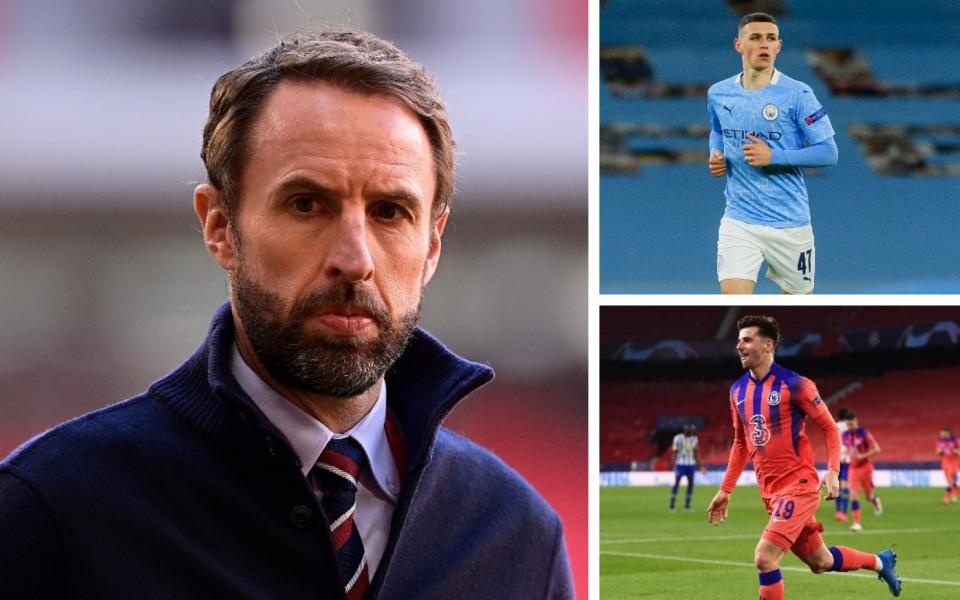Phil Foden, Jude Bellingham and co show England have emerged from the dark ages to become a creative talent factory

A decade ago, when Gareth Southgate was appointed as the Football Association’s new head of elite development, he spoke of the “technical inferiority” he had felt when playing for England against leading international sides. In his experience, he said, other countries produced players with better technique, better control and better understanding of a possession-based game.
It was hardly controversial at the time. England had just been demolished in the World Cup by a fluid Germany team, and the absence of technical creative players in the national squad had been an issue for years. There was growing anger at the lack of homegrown talent in the Premier League and the fact that the few technical players who had come through, such as Paul Scholes and Joe Cole, had been either misused or underused at international level.
The early 2010s marked an obvious turning point in the country’s approach to youth development. The Premier League’s Elite Player Performance Plan (EPPP) was introduced in 2012 with the stated intention of “producing more and better homegrown players”, while in 2014 the FA unveiled its “England DNA” philosophy, aimed at developing more technically-capable players for the international sides.
It is still too early and too simplistic to say definitively whether these initiatives, coupled with various fundamental changes in grassroots youth football, have worked. After all, it is only three years since Southgate’s England team were given another technical schooling by Luka Modric’s Croatia in the World Cup semi-final of 2018.
But what is clear is that the primary objective of producing more technically-assured homegrown players for England’s national team has been achieved. Far from having a dearth of creative talents, Southgate now has so many to pick from that it must be hard to know where to start.
This week alone, Phil Foden and Mason Mount have scored crucial goals in Champions League quarter-finals, for Manchester City and Chelsea respectively. Borussia Dortmund’s Jude Bellingham, aged 17, was superb against City, and would have had a goal of his own if he had not been denied by some horrendous officiating.

Aston Villa’s Jack Grealish has been one of the standout players of this season’s Premier League, while Leicester City’s James Maddison is perhaps the most natural No 10 that English football has produced in years. At Arsenal there is Emile Smith Rowe, another emerging talent, and at Liverpool there is Curtis Jones. All these creative midfielders fit the mould of the sort of player that the EPPP and the “England DNA” initiative (which prompted plenty of scoffing at the time) were designed to produce.
Ten years ago, Southgate spoke about “sensing a shift” in attitudes, particularly within coaching circles. The dominance of Barcelona and Spain had shown what could be achieved with a supremely technical style of play, and gradually that has filtered down into the academies and coaching strategies of English clubs.
At academy level, coaches describe a dramatic change in approach. The EPPP has sharpened the focus on technical elements of the game, such as maintaining possession under pressure, and the importance placed on duels and aggression has been reduced.
On a more philosophical level, greater emphasis has been placed on exploring different strategies for nurturing young minds. All this has been helped by the huge increase in the number of full-time coaches — there are now around 800 across the academies, compared to around 250 when the EPPP was launched.
The history of football has shown there will always be outliers: freak talents who are so gifted that they will emerge no matter the system. Perhaps Foden and Mount fit into this bracket. But it has not been missed within the game that they are of the first generation to have spent their entire formative years within the EPPP model, developing as genuine products of the new approach to youth development.
And even if Foden and Mount are simply unique talents, then there is still some considerable depth behind them. The underlying progress is impossible to ignore for English footballers, and it can be seen every weekend in Premier League squads.
Last season, for example, there was a significant increase in the number of top-flight players who were eligible to play for England. In all, 35.6 per cent of the players who started Premier League matches in 2019/20 were qualified to represent England, a rise of more than five per cent from the previous campaign.
Naturally, none of this is any guarantee of international success. Southgate’s role ten years ago was to think long-term and find solutions to deep-lying problems. Now it is to make the most of these new talents in the next few matches. He will be judged on short-term results, but those should not detract from the progress that has been made over a transformational decade for English football.

 Yahoo Sport
Yahoo Sport 





































